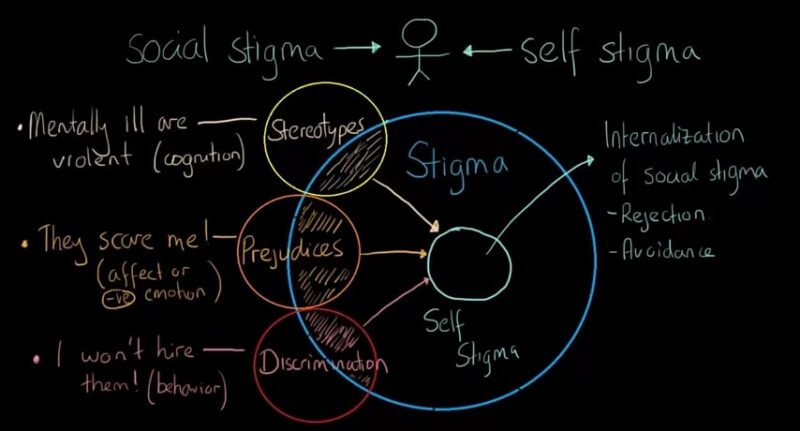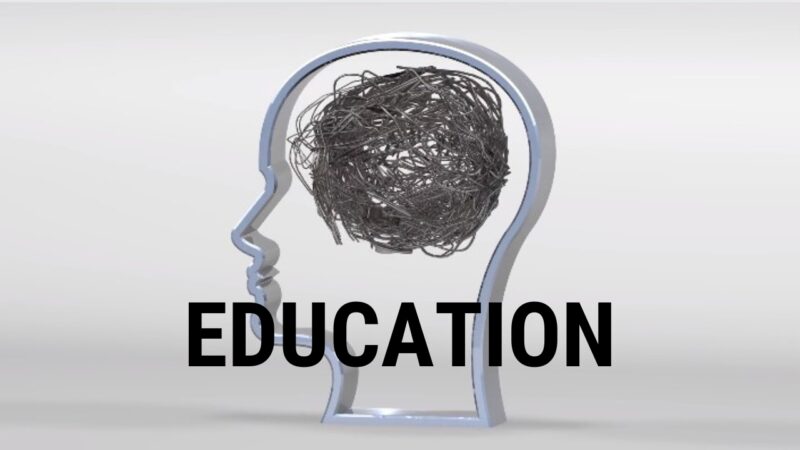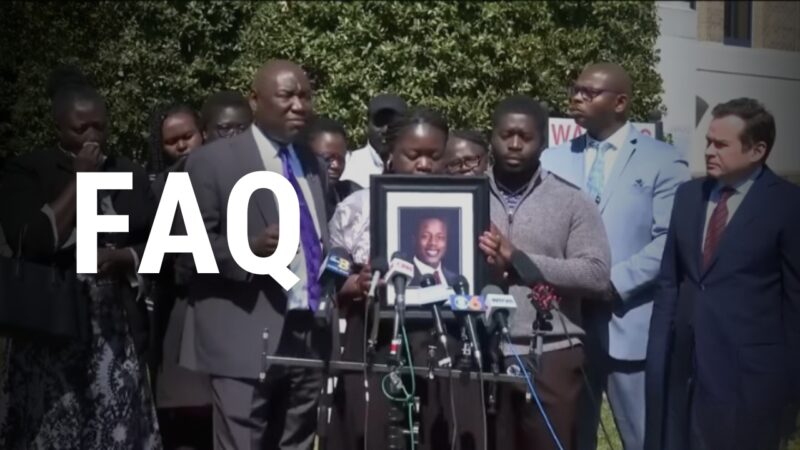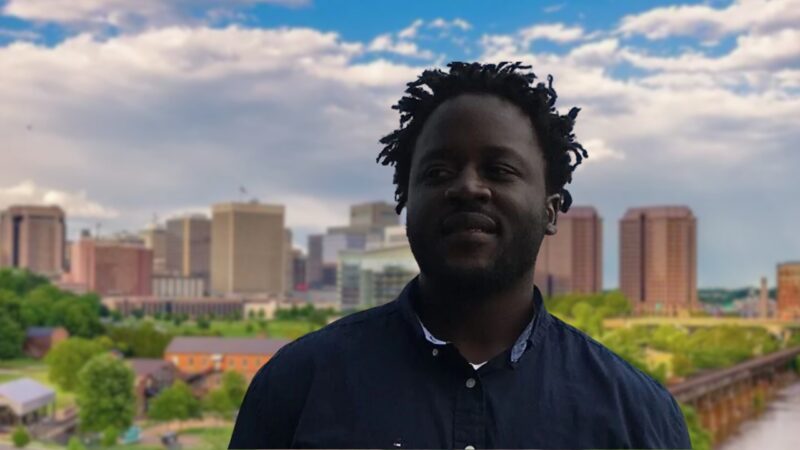The tragic death of Irvo Otieno, a 28-year-old man who died while in custody at a psychiatric hospital, has sparked a nationwide conversation about mental health care in the United States.
His death, which occurred during a mental health crisis, has highlighted the urgent need for reform in how law enforcement and health care systems respond to individuals experiencing mental health distress.
The Tragic Incident
Irvo Otieno, a young man of Kenyan descent, was experiencing a mental health crisis on March 3rd. He was taken into emergency custody and spent three days in a local jail in Henrico County, Virginia.
During his time in jail, he was reportedly subjected to brutal treatment, including being pepper-sprayed, stripped naked, and deprived of his medications. He was then transferred to Central State Hospital, a state-run mental facility in Dinwiddie County.
The Fatal Incident at the Hospital
At the hospital, Otieno was restrained with handcuffs and leg shackles throughout the intake process. Seven sheriff’s deputies held him on the ground for about 12 minutes, leading to his death by asphyxia.
The deputies and three hospital employees were subsequently charged with second-degree murder. The incident was captured on surveillance video, which showed the brutal treatment Otieno received.
The Aftermath
The legal proceedings following Otieno’s death have been swift and decisive. The seven deputies involved were immediately placed on administrative leave and later arrested. Three employees of Central State Hospital were also charged with second-degree murder. The case is set to go before a grand jury for a final determination of charges.
The Family’s Fight for Justice
Otieno’s family, represented by civil rights attorneys Mark Krudys and Ben Crump, are seeking justice for his death. They have called for the U.S. Department of Justice to intervene, arguing that the case spans multiple jurisdictions and involves a violation of Otieno’s constitutional rights. The family is also calling for broader reforms to prevent similar incidents from happening in the future.
The U.S. Mental Health Care System: An Overview
The U.S. healthcare system is rife with barriers that often prevent individuals from receiving the mental health care they desperately need. These barriers include a lack of accessibility, high costs, and a cultural stigma.
Accessibility Issues
Mental health services are often not readily available, particularly for those residing in rural areas or those without private health insurance. This lack of access can exacerbate mental health conditions and contribute to feelings of isolation.
- Approximately 111 million Americans live in areas designated as Mental Health Professional Shortage Areas by the U.S. Department of Health and Human Services.
- Even for those with insurance, in-network mental health providers can be difficult to find, leading to long wait times and the potential for conditions to worsen.
High Costs and Insurance Hurdles

Even when mental health services are accessible, their high costs often render them unattainable for many. Navigating the complex health insurance landscape can also be a daunting task, further dissuading individuals from seeking help.
- An estimated 12% of adults with mental illness remain uninsured, hindering their access to necessary care.
- Out-of-pocket costs for mental health care, even with insurance, can be prohibitively expensive, causing many to forgo treatment.
The Stigma Surrounding Mental Health
Stigma is a powerful force that can deter individuals from seeking help for various issues. This stigma is perpetuated by misconceptions and stereotypes, leading to feelings of shame and fear of discrimination.
Public Stigma
Public stigma refers to the negative attitudes and beliefs that society holds about people with mental health issues. This can lead to discrimination in employment, housing, and social relationships.
- Public stigma can deter individuals from seeking help for fear of being labeled or treated differently.
- Harmful stereotypes often portray individuals with mental illness as dangerous or unpredictable, further exacerbating public stigma.
Self-Stigma

Self-stigma refers to the internalized shame that individuals with mental illness may feel. This can lead to feelings of worthlessness and a decreased sense of self-efficacy.
- Self-stigma can deter individuals from seeking help, as they may feel undeserving or fearful of judgment.
- Internalizing public stigma can exacerbate mental health symptoms and contribute to feelings of isolation and hopelessness.
Proposed Solutions
To improve mental health care in America, comprehensive changes must be made at the systemic level. This includes increasing funding for mental health services, improving access, and working to reduce stigma.
Increased Funding
Increased funding for mental health services is crucial. This could involve allocating more funds toward public clinics, training more professionals, and investing in research.
- Allocating more funding for public mental health clinics could reduce wait times and increase accessibility.
- Training more professionals could help address the shortage, particularly in underserved areas.
Improving Access to Services
Efforts should be made to improve access to mental health services. This could involve expanding mental health coverage under insurance plans, implementing teletherapy options, and improving education in schools.
- Expanding mental health coverage under insurance plans could reduce the financial burden of seeking help.
- Teletherapy options could make therapy more accessible, particularly for those in rural areas or with transportation barriers.
Reducing Stigma: A Society-Wide Effort
Reducing the stigma surrounding mental health involves a society-wide effort. This includes promoting education, sharing personal stories, and encouraging open conversations about this topic.
Education

Promoting mental health education in schools, workplaces, and community settings can help combat harmful stereotypes and misconceptions.
- Education can help people understand that mental illness is not a character flaw but a treatable health condition.
- It can also equip individuals with the tools to support those who are struggling.
Sharing Personal Stories
Sharing personal stories can help reduce stigma by humanizing mental health issues. These stories can serve as powerful reminders that anyone can struggle with these problems, regardless of their outward success or societal status.
- Public figures openly discussing their mental health can help normalize these struggles and encourage others to seek help.
- The late Irvo Otieno’s story serves as a reminder that mental illness does not discriminate. His legacy offers an opportunity to foster conversations around mental health, advocating for systemic change.
FAQs

Who Was Irvo Otieno?
Irvo Otieno was a 28-year-old Black man who struggled with mental illness. His death in a Virginia mental hospital has sparked outrage and led to second-degree murder charges against 10 defendants.
How Did Irvo Otieno Die?
Irvo Otieno died of “positional and mechanical asphyxia with restraints,” according to a medical examiner’s office. He was pinned to the floor by seven sheriff’s deputies and several others while being admitted to a mental hospital.
What Were the Circumstances Leading to His Death?
Otieno was first taken into police custody in Henrico County on March 3, when he was transported to a local hospital for mental health treatment under an emergency custody order.
He was transferred to the state hospital on March 6, where he was forcibly led into a hospital room and restrained for about 20 minutes, during which he became limp and lifeless.
Who Has Been Charged in Connection with His Death?
Seven deputies and three hospital workers have been charged with second-degree murder in Otieno’s death.
What Was the Reaction to His Death?
Otieno’s death has sparked outrage and calls for mental health and policing reforms. Civil rights leader the Rev. Al Sharpton and other speakers at his funeral said his death showed the need for these reforms.
What Does His Family Say About His Death?
Otieno’s family and their attorneys have said he posed no danger to the deputies and hospital workers and was simply trying to breathe during the encounter at the hospital. They believe he should have been provided medical help and compassion.
What Is the Significance of His Death?
His death has highlighted the need for reform in the handling of mental health cases by law enforcement and healthcare providers. It has also raised questions about the use of excessive force and restraint techniques.
What Is the Current Status of The Case?
All defendants have been granted bond, and court records show pre-trial hearings in April or May.
What Is the Family’s Current Action?
The family of Irvo Otieno is requesting a federal investigation into his death.
How Has His Death Impacted the Community?
His death has sparked a conversation about the intersection of mental health and law enforcement and the need for reform in these areas. It has also led to calls for justice and accountability for his death.
Final Words
The loss of Irvo Otieno is a stark reminder of the profound gaps in our mental health care system. His story underscores the need for systemic change, compassionate care, and the elimination of stigma surrounding mental health. In honoring Irvo, we must commit ourselves to creating a society where everyone can access the care they need and deserve.
The incident’s aftermath raises questions about the implications of the first-person act and its impact on the justice system.
